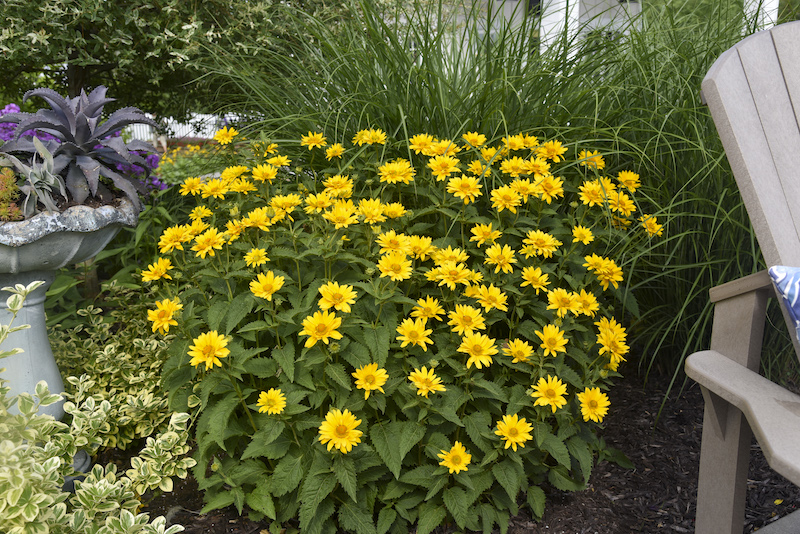Sunflowers are known for bright colored flowers that add vibrancy to a bed, border, or container. Also known as Helianthus, there is an abundance of varieties, including perennials and annuals, so if you want sunny blooms that will come back again or if you’re looking for a one-time burst of color, then you can find what you want. The flowers are sunny yellow or reddish-orange, depending on the cultivar. Sunflowers can feature tall stems with large blooms that stand several feet high or be branched, bushy plants with smaller flowers. Whatever landscape look you want, there is likely to be a sunflower that fits your vision.

What You Need To Plant Sunflowers
- Shovel
- Compost or manure
- Garden spade
- Good location
- Water source
- Mulch
Where to Plant Sunflowers
Sunflowers need full sunlight. Lots of light is necessary for these plants to thrive and set flowers. A spot that receives 8 hours of light daily is a good choice. Plant sunflowers in well-drained soil with high organic content. Drainage is essential to prevent root rot, so avoid soil with high clay content. These plants are heavy feeders, and rich soil is necessary for their rapid growth. A soil pH between 6.0-7.5 is ideal.
Sunflowers Spacing
Spacing for sunflowers depends on the specific cultivar, with anywhere from 6 inches to 3 feet between plants. Most sunflower plants do not need support, although tall varieties may benefit from a cage support, especially for plants in areas prone to high wind.

Steps To Plant Sunflowers
Step 1 - Choose a location that receives plenty of sunlight
Step 2 - Dig a hole slightly bigger than the root ball and amend the soil with manure or organic compost
Step 3 - Position the root ball in the hole so the top is level with the surrounding ground and backfill with soil
Step 4 - Spread mulch around the base of the plant
Step 5 - Water newly planted sunflowers until the soil is saturated
When to Plant Sunflowers
Time planting of annual sunflower plants to the spring when there is no longer a chance of frost but before the high heat of summer kicks in. Cold temperatures can be damaging and warm weather is challenging for new plants. Once sunflower plants have acclimated, they can take on the summer heat. Depending on the climate, mid-spring is generally an excellent time to plant sunflowers.
Perennial sunflower planting can happen during the spring or fall. The temperatures should be warm, but not hot. Mornings are generally a good time to plant, so the sunflower plant will experience less transplant shock during the heat of the day.
Transplanting Sunflowers
It’s generally unnecessary to transplant annual sunflower plants since they are only around for a season. Transplant perennial sunflowers in the spring. Wait until the temperature is consistently warm before transplanting sunflower plants. Many sunflowers may self-seed if the flowers are left in place and go to seed. New plants will emerge in the spring and can be moved when they stand at least a few inches tall.
New plants can be grown from perennial sunflower cuttings. Cuttings are more likely to succeed if they are taken from new growth that is still soft and has not hardened. Do not take cuttings when the plant is blooming. Place the cut end in the soil and keep the mix damp for several weeks.
Repot container-grown perennial sunflower plants each spring to start the growing season with fresh soil. These plants prefer soil with high organic content, and new soil is necessary to help the plants grow and thrive.
 |
Author Alison Cotsonas - Published 05-01-2023 |
